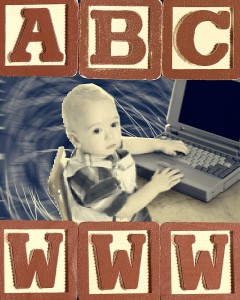Teaching X: Computational thinking and teachers
I love teachers. We are so immersed that we do not recognize our own laser-like focus. (Notice that I use a positive term, not the pejorative one, “blinders.”) First grade teachers notice whether people wait patiently in line at the checkout and count their express line items. English teachers notice all the incorrect apostrophes on billboards and news headlines. Biology teachers see microbes when someone rests a hand on a railing. Geometry teachers grumble when the guy at Lowe’s cannot cut the lumber at the correct angle.
 The same focus of passion grows greater among university professors and successful professionals: If the world only realized how important it is for kids to learn X. Why aren’t the schools teaching X? Studies come out promoting the importance of X in the future of our country and the world. Many of these studies make valid points about our changing world and the need for schools — and kids — to continuously adapt and change.
The same focus of passion grows greater among university professors and successful professionals: If the world only realized how important it is for kids to learn X. Why aren’t the schools teaching X? Studies come out promoting the importance of X in the future of our country and the world. Many of these studies make valid points about our changing world and the need for schools — and kids — to continuously adapt and change.
One current focus of passion is the movement to teach code in schools. With all the news about cybersecurity and hacking, there are those crying out for code to be a high school requirement. I have written about it before. I see value in this initiative, too. But reading an Edsurge post by Shuchi Grover — and the Jeannette Wing article Gover refers to about teaching computational thinking — made me stop and think. First, I want to know exactly what computational thinking is in layman’s terms. Wing explains that, sort of. Grover argues that we should be teaching the thinking, not so much the code.
I wonder how much of the basics of computational thinking IS going on in schools by another name or under a different curricular (or non-curricular) umbrella. More importantly, I wonder about the precursors that lead to the actual named “computational thinking” terms and skills. The examples Wing gives make me look for points where students have opportunity and challenge to develop these skills. Wing’s example of organizing a backpack as analogous to “prefetching and caching” are actually what we teachers call “organizational skills.” Though not part of mega-tested curriculum, organizational skills are part of every elementary student’s classroom experience. Many of the other concepts she mentions are there in middle or high school: modeling, analyzing, planning, hypothesis-testing, etc. The compthinking terms are definitely not used in high school, but the skills are. Through the lens of our passion as K-12 teachers, we see each with a different label from what the university prof might call it. I would have to sit down and talk at length with a computer science/computational thinking person to discover the learning experiences we call by different names. But I do believe many of them are there for at least some of our students. I know they were in the classes I taught for gifted.
What was not always there was the conversation about how the challenges we did related to things people do in real life. As a teacher, I did not know that the “higher level thinking challenges” I wrote into GIEPs and shared in my classroom were the skills my students-turned-scientists might later call “parallel processing” or “recursive thinking.” Teachers cannot possibly know all the ways the learning from their classroom can be morphed, renamed, and combined into an evolving career and contribution to the world. I wish I had known thirty years ago about all the ways that logic games can play into lives in engineering, computers, writing, art, and more. As a grown up, I keep learning about careers and fields I did not know about ten years ago. This does not devalue what happens in our classrooms. What we need is the conversations between practicing professionals from the real world and those in classrooms to connections in what we each do. Instead of telling us to teach X, help us see how what our students do actually leads to X. And help the proponents of X see and hear what happens in schools that they may not realize. We need first to translate and underscore what happens within our respective lens of passion so students, parents, and professionals might see how it all connects. Instead of another requirement, let’s find where the seeds are already planted. As a lifelong learner, I would really like to know where computational thinking is already happening in classrooms and to validate and highlight it so kids could be able to say, “I am good at X and want to know more about it. We may call it something different at school but this is something I want to do with my life.”
In the meantime, I will try not to judge billboards or people in the checkout line, at least not out loud.






